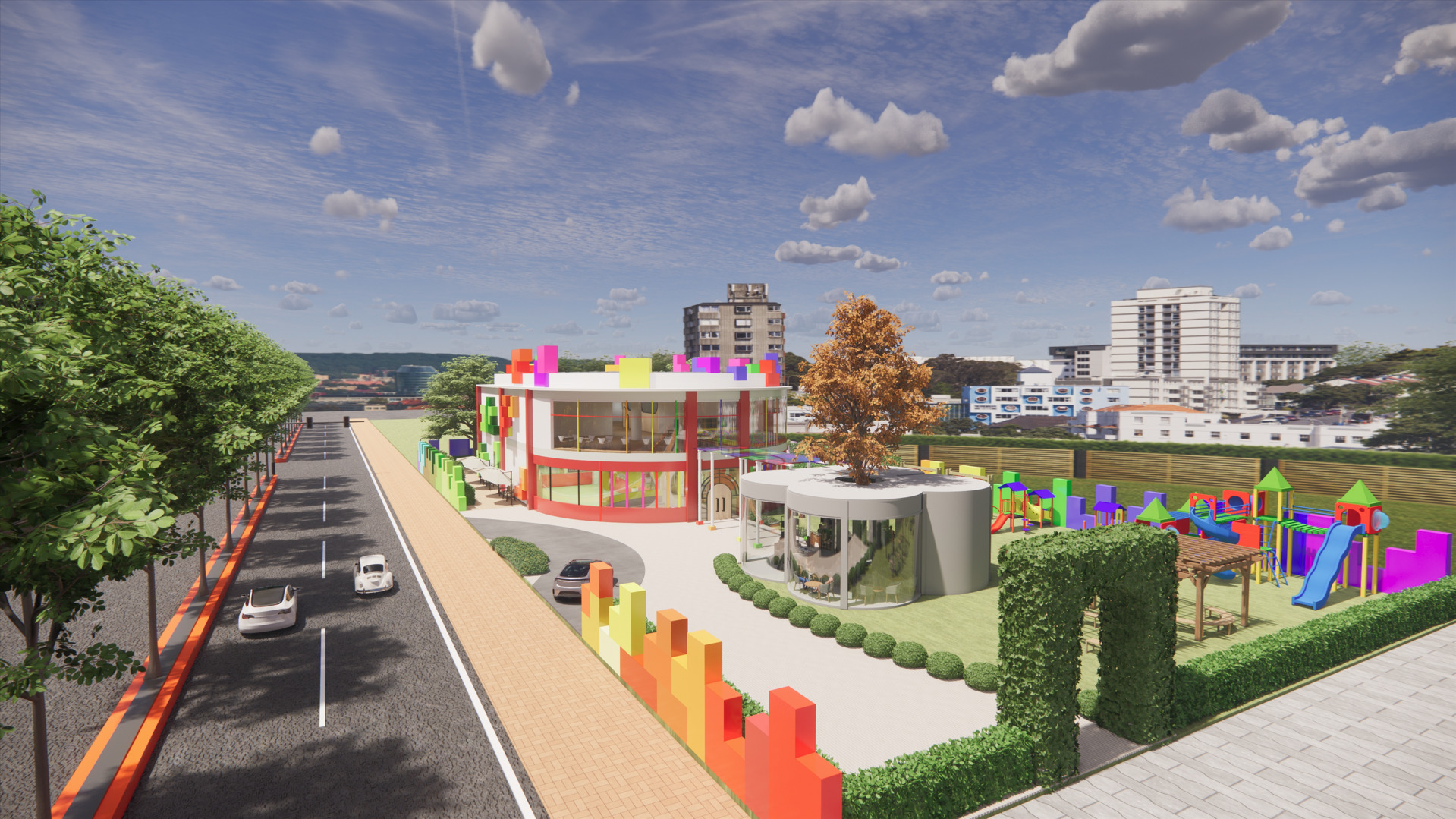
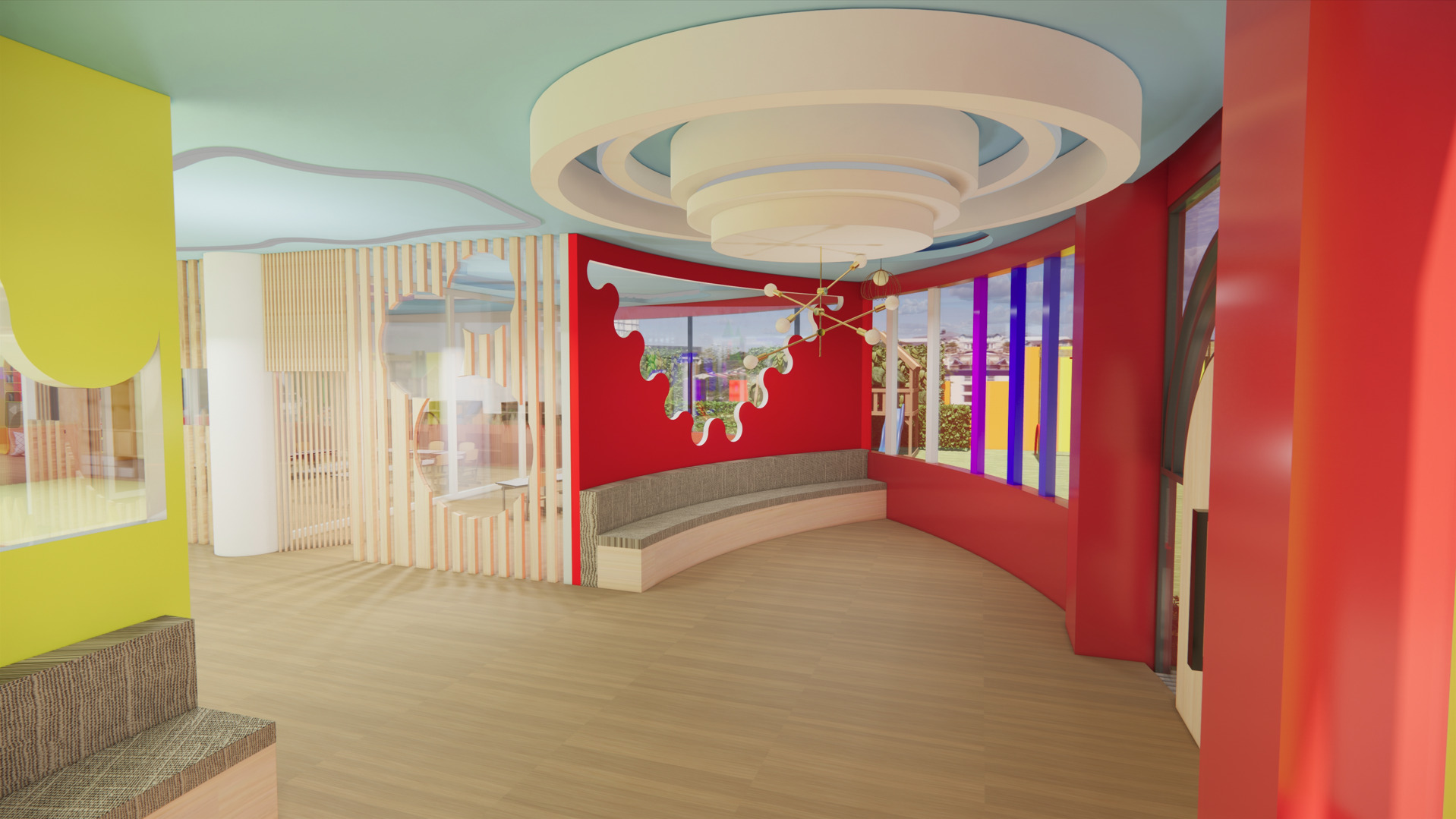


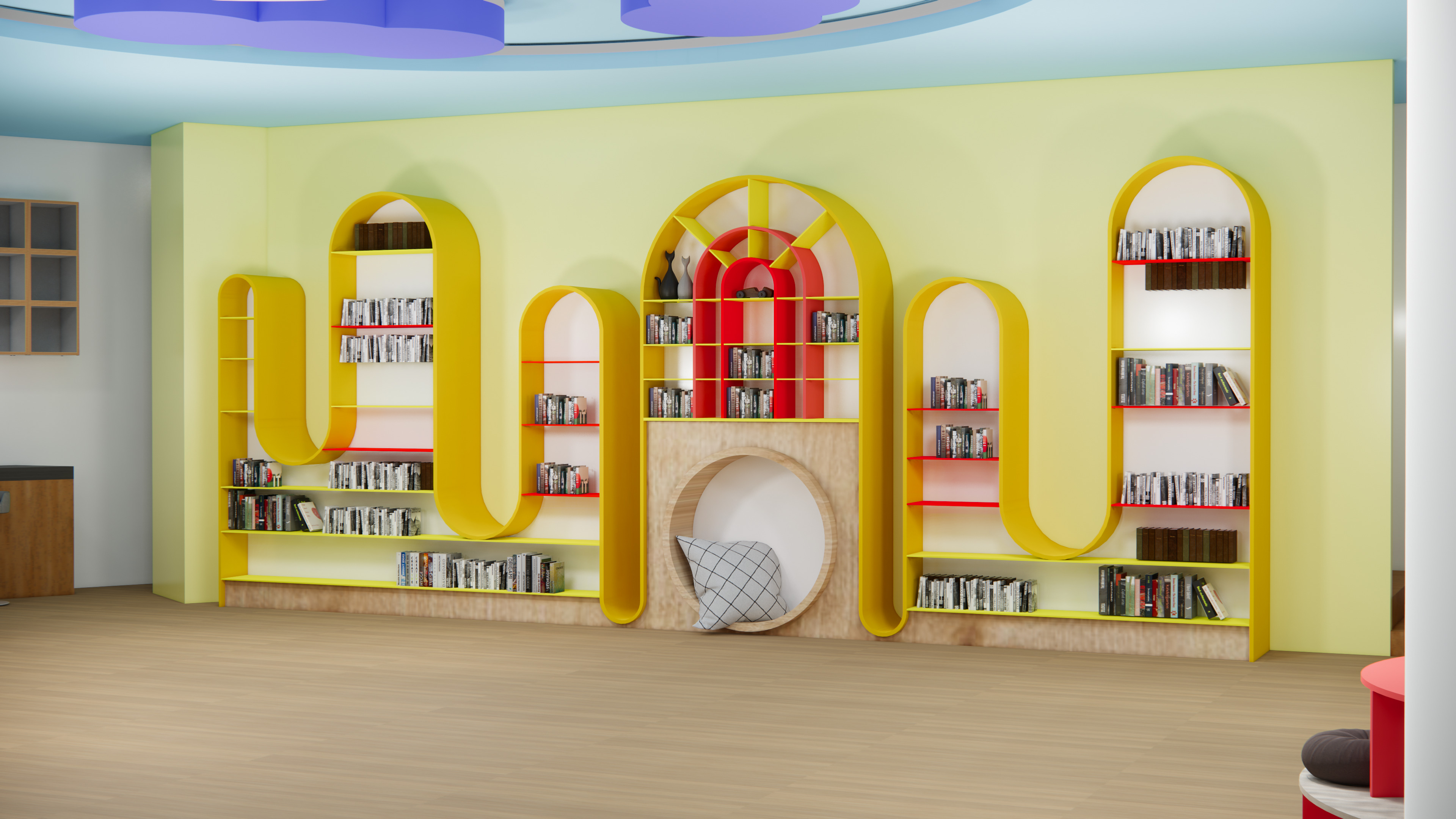
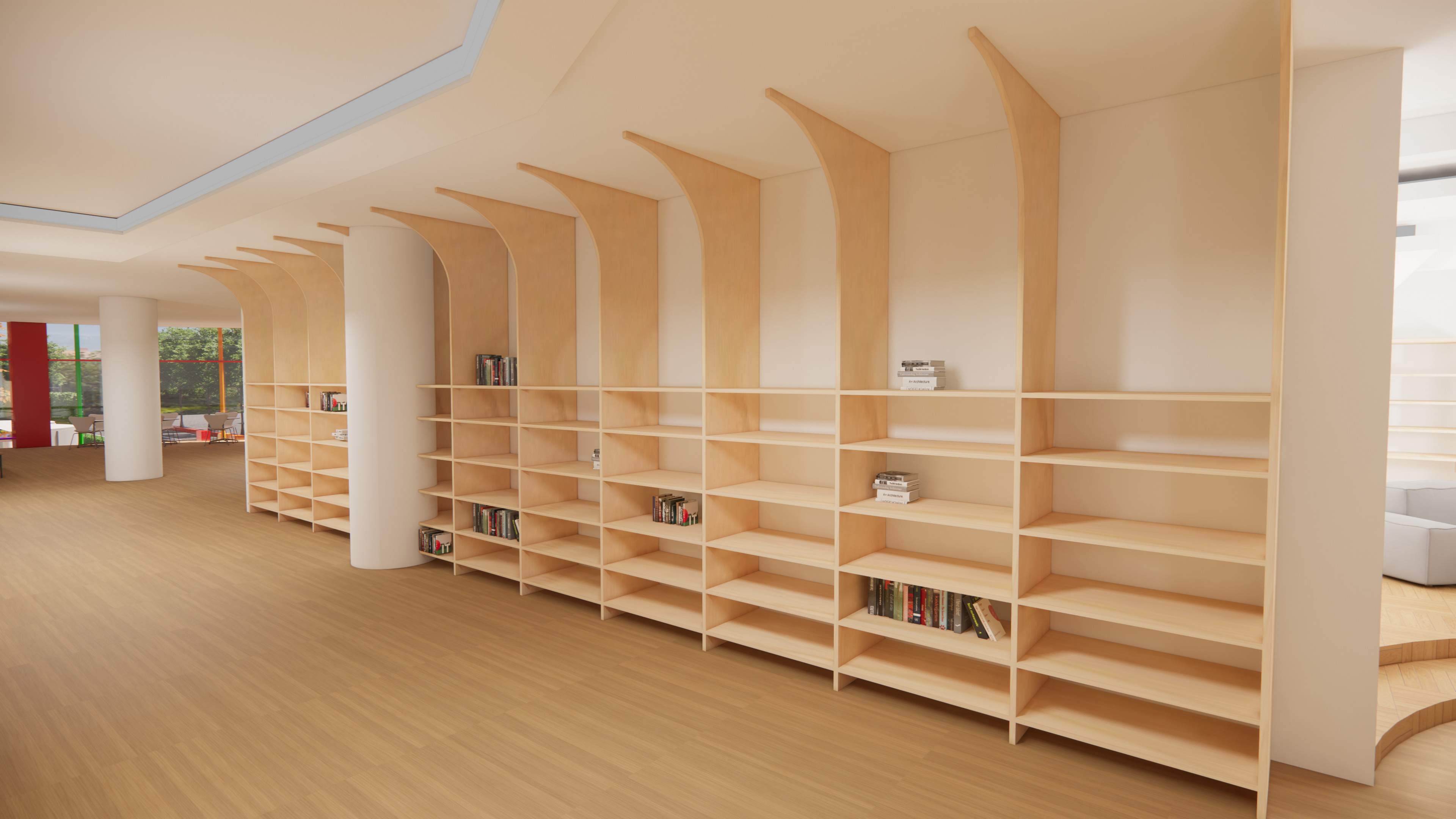
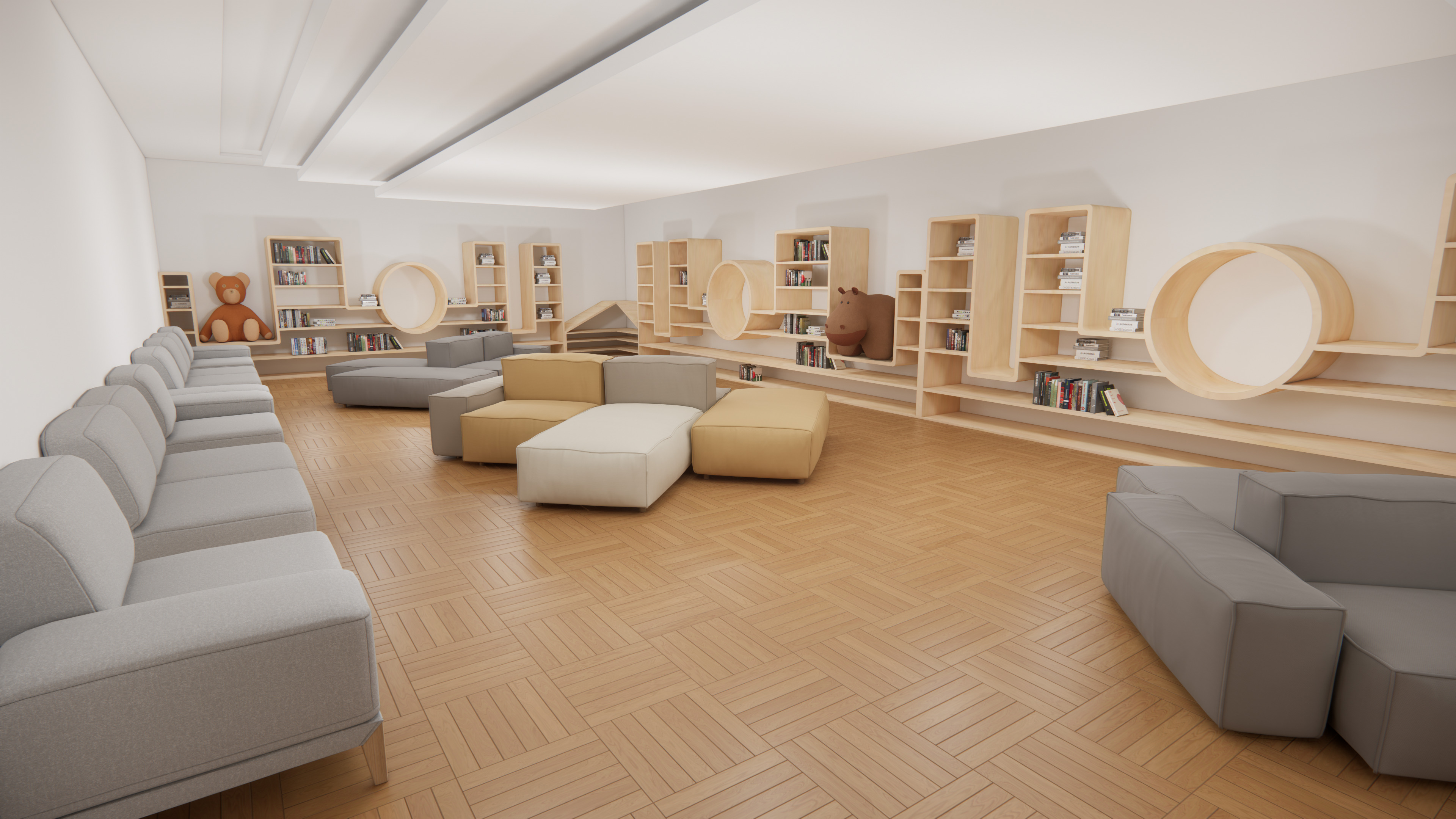
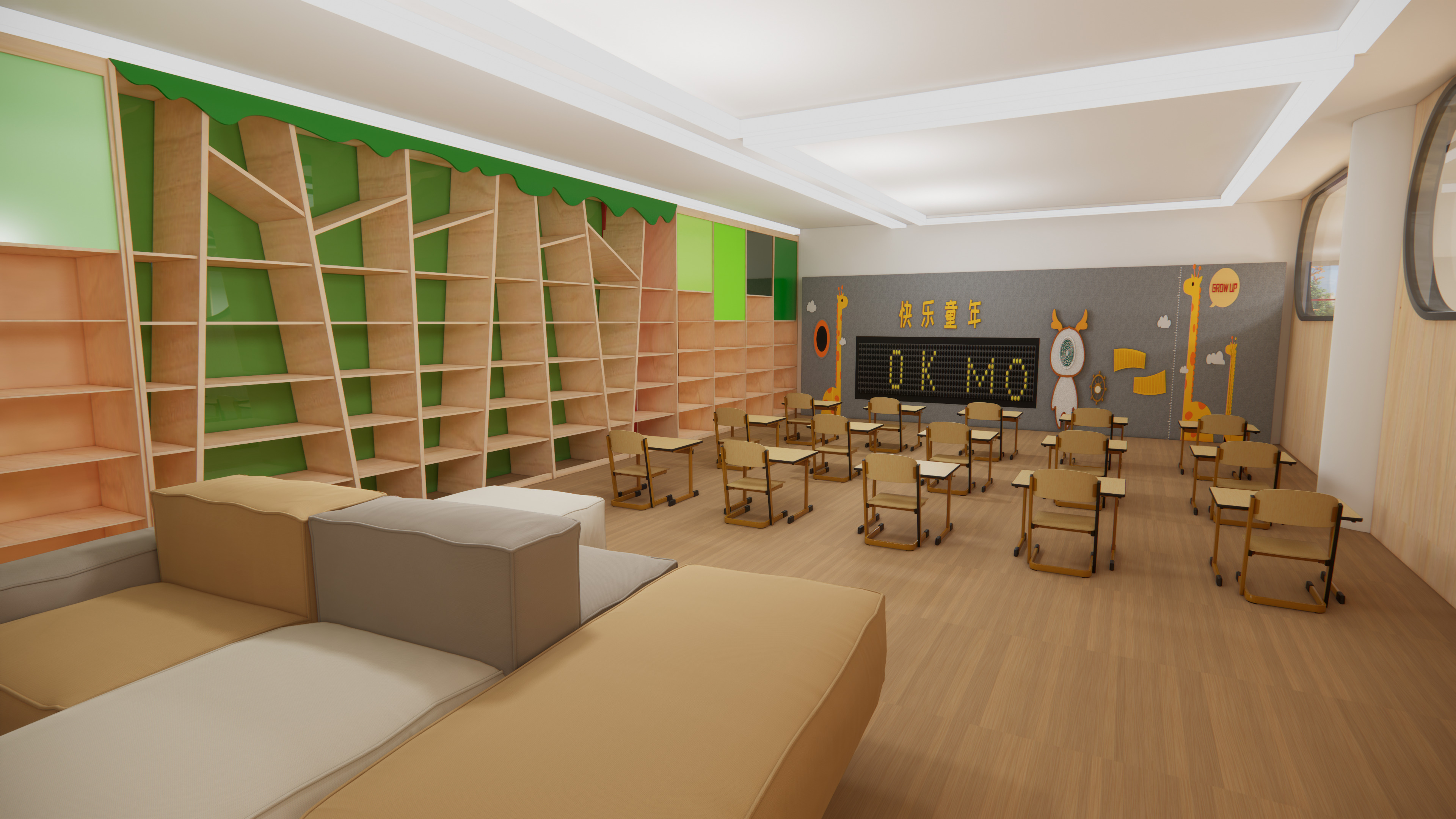
童樂,幼兒教育中心。
幼兒教育中心的目標年齡層以3-6歲幼兒為主要年齡層,促進幼兒全面發展的理想環境。
全面發展包含幼兒的體能與認知學習,快樂學習包含讓幼兒能在健康且安全的環境中學習成長。
本案設計以兩大重點為主題。
(一) 彩度高顏色
明亮的色彩能夠吸引小孩子的注意力,並且有助於他們的情緒表達和想像力。
(二)四季變化
四季的代表元素可以透過各種方式展現出來,幫助孩子理解每個季節的特徵和變化。
本案設計考慮到幼兒的身心發展需要提供一個豐富、安全、和溫馨的環境。
以下是設計幼兒教育中心的關鍵考慮因素:
(1)安全性
確保環境的安全性是首要任務,包括防止尖銳物品、有毒物質和 危險設備的接觸,並確保幼兒在活動中不受傷害。
(2)刺激性
提供各種各樣的刺激和豐富的學習資源,包括教具、玩具、書籍和藝術材料,以激發幼兒的好奇心、探索慾和創造力。
(3)適應性
根據不同年齡層的幼兒需求,設計不同功能區域,如觸摸區、感官區、角色扮演區等,滿足他們多樣化的發展需求。
(4)互動性
創造一個促進社交互動和合作的環境,鼓勵幼兒與同儕和成人進行溝通、分享和合作。
(5)自主性
提供自主選擇和決策的機會,促進他們的自我意識和自我管理能力的發展。
Tongle, an early childhood education centre.
The target age group of the early childhood education center is 3-6 years old. The design concept focuses on the all-round development and happy learning of children, and promotes an ideal environment for the all-round development of children.
Comprehensive development includes children’s physical and cognitive learning, and happy learning includes allowing children to learn and grow in a healthy and safe environment.
The design of this case is based on two main themes.
(I) High-saturation colors
Bright colors can attract children's attention and help them express their emotions and imagination.
(II) Changes of the Four Seasons
The representative elements of the four seasons can be presented in various ways to help children understand the characteristics and changes of each season.
The design of this case takes into account the physical and mental development needs of young children and provides a rich, safe, and warm environment.
The following are key considerations in designing an early childhood education center:
(1) Safety
Ensuring the safety of the environment is a top priority, including preventing contact with sharp objects, toxic substances, and dangerous equipment, and ensuring that young children are not injured during activities.
(2) Stimulation
Provide a variety of stimuli and rich learning resources, including teaching aids, toys, books and art materials, to stimulate children's curiosity, desire for exploration and creativity.
(3) Adaptability
Different functional areas are designed according to the needs of children of different age groups, such as touch area, sensory area, role-playing area, etc., to meet their diverse development needs.
(4) Interactivity: Create an environment that promotes social interaction and cooperation, encouraging young children to communicate, share and collaborate with peers and adults.
(5) Autonomy: Provide opportunities for independent choice and decision-making to promote the development of their self-awareness and self-management abilities.